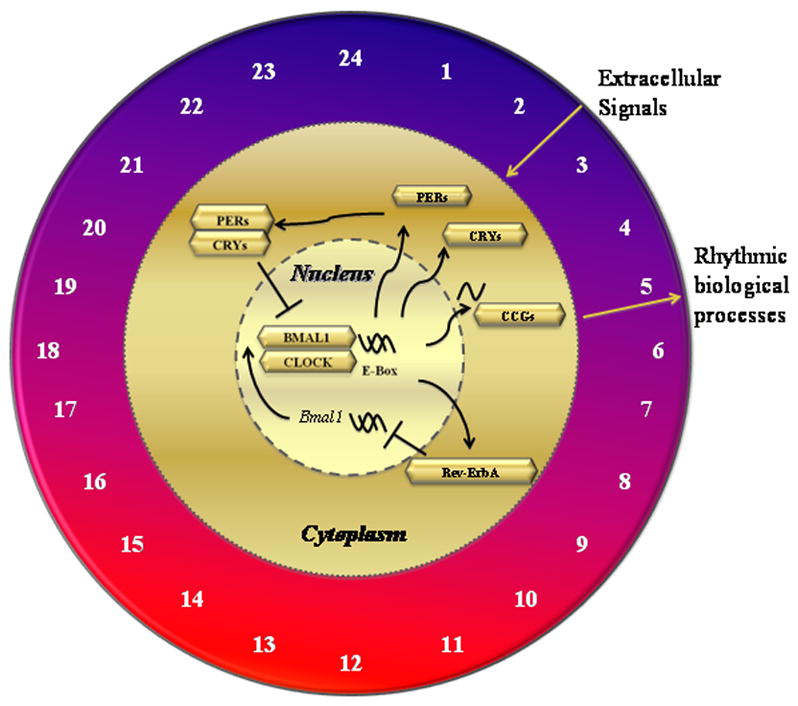Figure 1.

Molecular mechanisms of circadian rhythms in critical illness. A variety of biologic reactions are involved in the pathogenesis of critical illness, which are influenced by circadian rhythm clock of cells. Circadian locomotor output cycles kaput (CLOCK) dimerizes with brain and muscle aryl hydrocarbon receptor nuclear translocator-like (BMALI) in the nucleus and transactivates gene expression of orphan nuclear receptor (Rev-ErbA), period (PER), and cryptochrome (CRY), producing proteins that accomplish various circadian physiological actions. PER and CRY reside in the cytoplasm and form a protein complex that traffics back into the nucleus, downregulating CLOCK and BMALI expression, thus closing a negative feedback loop. Various external stimuli such as environmental disturbances and lipopolysaccharide challenge can alter circadian rhythms in critically ill patients, which may influence development and/or progression of various diseases. The number of timing on the clock face (ie., 6 hrs coincides with the onset of the light period) play a significant role in regulating the human cycle of the clock genes.
